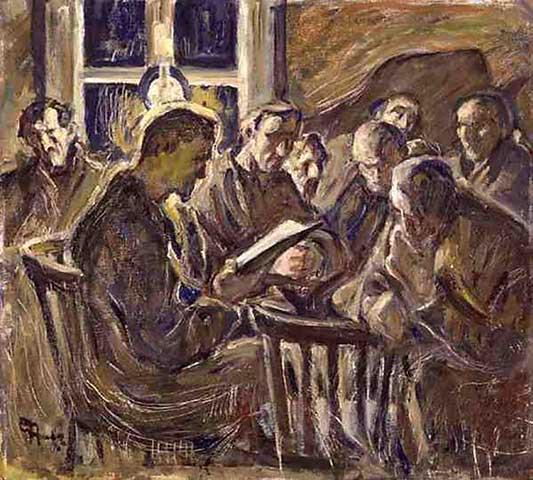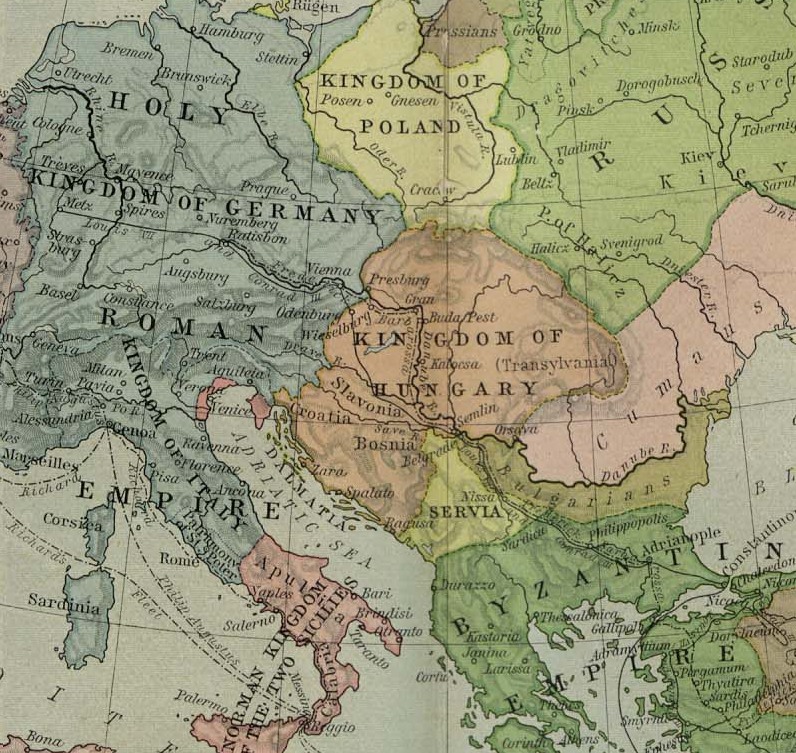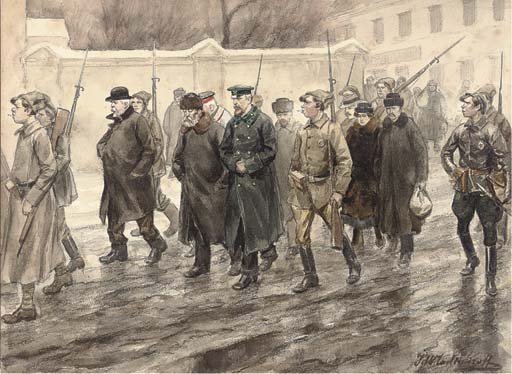|
Hungary Between The World Wars
After the collapse of a short-lived Communist regime, according to historian István Deák: :Between 1919 and 1944 Hungary was a rightist country. Forged out of a counter-revolutionary heritage, its governments advocated a “nationalist Christian” policy; they extolled heroism, faith, and unity; they despised the French Revolution, and they spurned the liberal and socialist ideologies of the 19th century. The governments saw Hungary as a bulwark against bolshevism and bolshevism’s instruments: socialism, cosmopolitanism, and Freemasonry. They perpetrated the rule of a small clique of aristocrats, civil servants, and army officers, and surrounded with adulation the head of the state, the counterrevolutionary Admiral Horthy. István Deák, “Hungary” in Hans Roger and Egon Weber,eds., ''The European right: A historical profile'' (1963) p 364-407 quoting p. 364. Hungarian Democratic Republic On October 31, 1918, the Hungarian Democratic Republic was created by revolution ... [...More Info...] [...Related Items...] OR: [Wikipedia] [Google] [Baidu] |
István Deák
István Deák (born 11 May 1926) is a Hungarian-born American historian, author and academic. He is a specialist in modern Europe, with special attention to Germany and Hungary. Life and work Deák was born at Székesfehérvár, Hungary into an assimilated Jewish family that had converted to Catholicism. His parents were Istvan and Anna (Timár) Deák. He was educated at a Catholic gymnasium (high school) in Budapest and began his university studies in 1945 at the University of Budapest. His studies were disrupted by the war and postwar chaos, and he left Hungary in 1948, following the communist takeover. He then studied history at the Sorbonne in Paris and worked as a journalist in France and for Radio Free Europe in West Germany. In 1956, unable to gain residence in France, he settled in New York City where he studied modern European history at Columbia University under Fritz Stern. He obtained an M.A. (1958) and then a Ph.D. (1964), with a dissertation on "Weimar Germany's ... [...More Info...] [...Related Items...] OR: [Wikipedia] [Google] [Baidu] |
Freedom Of Assembly
Freedom of peaceful assembly, sometimes used interchangeably with the freedom of association, is the individual right or ability of people to come together and collectively express, promote, pursue, and defend their collective or shared ideas. The right to freedom of association is recognized as a human right, a political right and a civil liberty. The terms ''freedom of assembly'' and ''freedom of association'' may be used to distinguish between the freedom to assemble in public places and the freedom to join an association. Freedom of assembly is often used in the context of the right to protest, while freedom of association is used in the context of labor rights and in the Constitution of the United States is interpreted to mean both the freedom to assemble and the freedom to join an association. Human rights instruments Freedom of assembly is included in, among others, the following human rights instruments: * Universal Declaration of Human Rights – Article 20 * Int ... [...More Info...] [...Related Items...] OR: [Wikipedia] [Google] [Baidu] |
Romania
Romania ( ; ro, România ) is a country located at the crossroads of Central, Eastern, and Southeastern Europe. It borders Bulgaria to the south, Ukraine to the north, Hungary to the west, Serbia to the southwest, Moldova to the east, and the Black Sea to the southeast. It has a predominantly temperate-continental climate, and an area of , with a population of around 19 million. Romania is the twelfth-largest country in Europe and the sixth-most populous member state of the European Union. Its capital and largest city is Bucharest, followed by Iași, Cluj-Napoca, Timișoara, Constanța, Craiova, Brașov, and Galați. The Danube, Europe's second-longest river, rises in Germany's Black Forest and flows in a southeasterly direction for , before emptying into Romania's Danube Delta. The Carpathian Mountains, which cross Romania from the north to the southwest, include Moldoveanu Peak, at an altitude of . Settlement in what is now Romania began in the Lower Paleolithic, with ... [...More Info...] [...Related Items...] OR: [Wikipedia] [Google] [Baidu] |
France
France (), officially the French Republic ( ), is a country primarily located in Western Europe. It also comprises of overseas regions and territories in the Americas and the Atlantic, Pacific and Indian Oceans. Its metropolitan area extends from the Rhine to the Atlantic Ocean and from the Mediterranean Sea to the English Channel and the North Sea; overseas territories include French Guiana in South America, Saint Pierre and Miquelon in the North Atlantic, the French West Indies, and many islands in Oceania and the Indian Ocean. Due to its several coastal territories, France has the largest exclusive economic zone in the world. France borders Belgium, Luxembourg, Germany, Switzerland, Monaco, Italy, Andorra, and Spain in continental Europe, as well as the Netherlands, Suriname, and Brazil in the Americas via its overseas territories in French Guiana and Saint Martin. Its eighteen integral regions (five of which are overseas) span a combined area of and contain clos ... [...More Info...] [...Related Items...] OR: [Wikipedia] [Google] [Baidu] |
Slovakia
Slovakia (; sk, Slovensko ), officially the Slovak Republic ( sk, Slovenská republika, links=no ), is a landlocked country in Central Europe. It is bordered by Poland to the north, Ukraine to the east, Hungary to the south, Austria to the southwest, and the Czech Republic to the northwest. Slovakia's mostly mountainous territory spans about , with a population of over 5.4 million. The capital and largest city is Bratislava, while the second largest city is Košice. The Slavs arrived in the territory of present-day Slovakia in the fifth and sixth centuries. In the seventh century, they played a significant role in the creation of Samo's Empire. In the ninth century, they established the Principality of Nitra, which was later conquered by the Principality of Moravia to establish Great Moravia. In the 10th century, after the dissolution of Great Moravia, the territory was integrated into the Principality of Hungary, which then became the Kingdom of Hungary in 1000. In 1241 ... [...More Info...] [...Related Items...] OR: [Wikipedia] [Google] [Baidu] |
Greater Hungary (political Concept)
Hungarian irredentism or Greater Hungary ( hu, Nagy-Magyarország) are irredentist political ideas concerning redemption of territories of the historical Kingdom of Hungary. Targeting at least to regain control over Hungarian-populated areas in Hungary's neighbouring countries. Hungarian historiography uses the term "Historic Hungary" (). "Whole Hungary" () is also commonly used by supporters of this ideology. The Treaty of Trianon defined the current borders of Hungary and, compared against the claims of the pre-war Kingdom, post-Trianon Hungary had approximately 72% less land stake and about two-thirds fewer inhabitants, almost 5 million of these being of Hungarian ethnicity. However, only 54% of the inhabitants of the pre-war Kingdom of Hungary were Hungarians before World War I. Following the treaty's instatement, Hungarian leaders became inclined towards revoking some of its terms. This political aim gained greater attention and was a serious national concern up through the S ... [...More Info...] [...Related Items...] OR: [Wikipedia] [Google] [Baidu] |
Red Terror
The Red Terror (russian: Красный террор, krasnyj terror) in Soviet Russia was a campaign of political repression and executions carried out by the Bolsheviks, chiefly through the Cheka, the Bolshevik secret police. It started in late August 1918 after the beginning of the Russian Civil WarLlewellyn, Jennifer; McConnell, Michael; Thompson, Steve (11 August 2019)"The Red Terror" ''Russian Revolution''. Alpha History. Retrieved 4 August 2021. and lasted until 1922. Arising after assassination attempts on Vladimir Lenin and Petrograd Cheka leader Moisei Uritsky, the latter of which was successful, the Red Terror was modeled on the Reign of Terror of the French Revolution,Wilde, Robert. 2019 February 20.The Red Terror" ''ThoughtCo''. Retrieved March 24, 2021. and sought to eliminate political dissent, opposition, and any other threat to Bolshevik power. More broadly, the term is usually applied to Bolshevik political repression throughout the Civil War (1917–1922 ... [...More Info...] [...Related Items...] OR: [Wikipedia] [Google] [Baidu] |
Revolutionary Tribunal (Hungary)
The Red Terror in Hungary ( hu, vörösterror) was a period of repressive violence and suppression in 1919 during the four-month period of the Hungarian Soviet Republic, primarily towards anti-communists, anti-communist forces, and others deemed "enemy of the people, enemies of the state". According to Robin Okey, the communist party and communist policies had considerable popular support among the proletarian masses of large industrial centers - especially in Budapest - where the working class represented a higher ratio of the inhabitants. In the Hungarian countryside, according to John Lukacs, the authority of the government was often nonexistent, serving as a launch-point for anti-communist insurgency. The new government followed the Soviet method: the party established its revolutionary terror groups (such as the "Lenin Boys") to "overcome the obstacles" of the worker's revolution. It received its name in reference to the Red Terror in Russian Soviet Federative Socialist Rep ... [...More Info...] [...Related Items...] OR: [Wikipedia] [Google] [Baidu] |
World Revolution
World revolution is the Marxist concept of overthrowing capitalism in all countries through the conscious revolutionary action of the organized working class. For theorists, these revolutions will not necessarily occur simultaneously, but where and when local conditions allow a revolutionary party to successfully replace bourgeois ownership and rule, and install a workers' state based on social ownership of the means of production. In most Marxist schools, such as Trotskyism and Communist Left, the essentially international character of the class struggle and the necessity of global scope are critical elements and a chief explanation of the failure of socialism in one country. The end goal of such internationally oriented revolutionary socialism is to achieve world socialism, and later, a communist society. Communist movements The October Revolution of 1917 in Russia sparked a revolutionary wave of socialist and communist uprisings across Europe, most notably the German ... [...More Info...] [...Related Items...] OR: [Wikipedia] [Google] [Baidu] |
Russian SFSR
The Russian Soviet Federative Socialist Republic, Russian SFSR or RSFSR ( rus, Российская Советская Федеративная Социалистическая Республика, Rossíyskaya Sovétskaya Federatívnaya Socialistíčeskaya Respúblika, rɐˈsʲijskəjə sɐˈvʲetskəjə fʲɪdʲɪrɐˈtʲivnəjə sətsɨəlʲɪˈsʲtʲitɕɪskəjə rʲɪˈspublʲɪkə, Ru-Российская Советская Федеративная Социалистическая Республика.ogg), previously known as the Russian Soviet Republic and the Russian Socialist Federative Soviet Republic as well as being unofficially known as Soviet Russia,Declaration of Rights of the laboring and exploited people, article I. the Russian Federation or simply Russia, was an independent federal socialist state from 1917 to 1922, and afterwards the largest and most populous of the Soviet socialist republics of the Soviet Union (USSR) from 1922 to 1991, until becoming a ... [...More Info...] [...Related Items...] OR: [Wikipedia] [Google] [Baidu] |
Dictatorship Of The Proletariat
In Marxist philosophy, the dictatorship of the proletariat is a condition in which the proletariat holds state power. The dictatorship of the proletariat is the intermediate stage between a capitalist economy and a communist economy, whereby the post-revolutionary state seizes the means of production, compels the implementation of direct elections on behalf of and within the confines of the ruling proletarian state party, and instituting elected delegates into representative workers' councils that nationalise ownership of the means of production from private to collective ownership. During this phase, the administrative organizational structure of the party is to be largely determined by the need for it to govern firmly and wield state power to prevent counterrevolution and to facilitate the transition to a lasting communist society. Other terms commonly used to describe the dictatorship of the proletariat include socialist state, proletarian state, democratic proletarian state, r ... [...More Info...] [...Related Items...] OR: [Wikipedia] [Google] [Baidu] |







